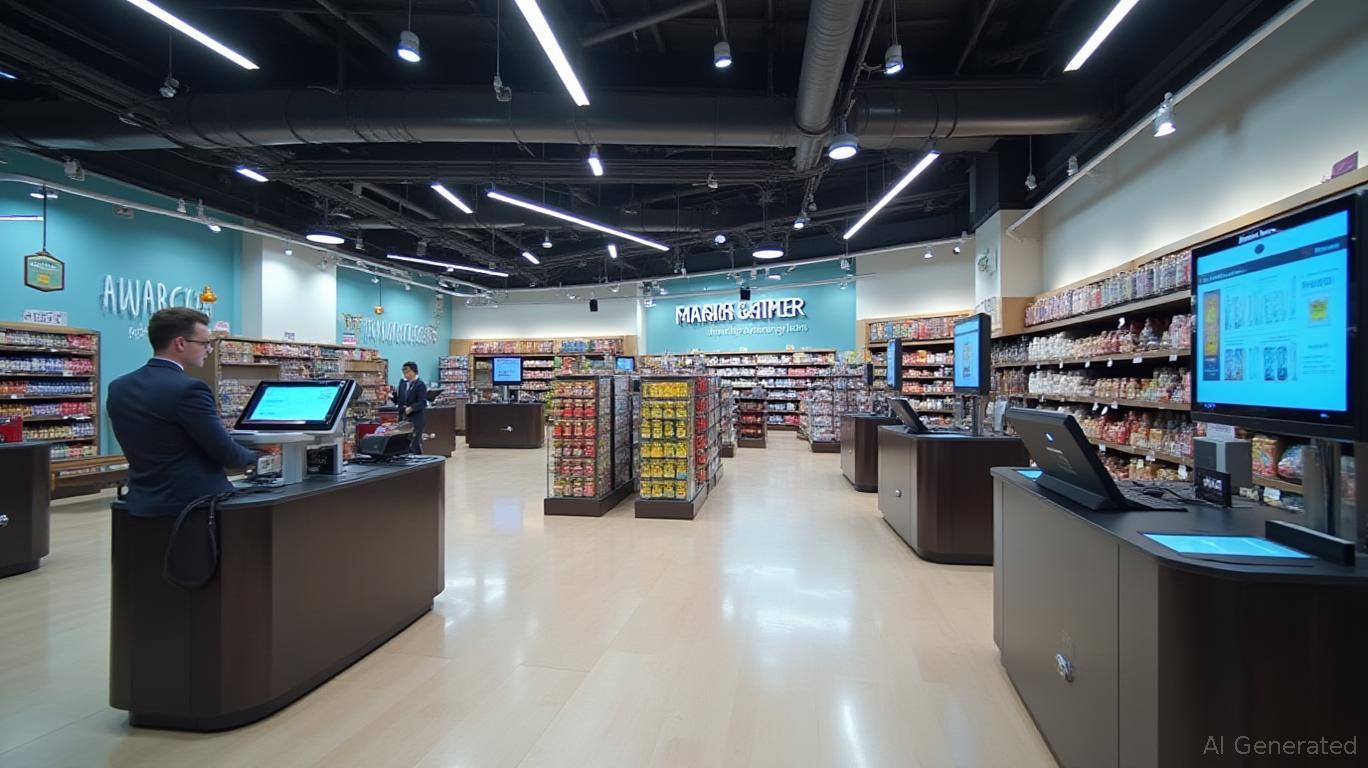Marks & Spencer's Cyber Crisis: A Test of Resilience in the Digital Age?
The cyberattack that struck Marks & Spencer (M&S) in April 2025 has thrown the retailer’s operations into disarray, with contactless payments and Click & Collect services remaining offline for days—and counting. The disruption, which began during the Easter Bank Holiday weekend, has tested M&S’s crisis management, rattled investor confidence, and underscored the vulnerabilities of modern retail infrastructure.

The Current Situation: A Standstill in the Digital Age
As of April 24, M&S continues to grapple with a “cyber incident” that has left contactless payments unavailable across its UK stores. Customers attempting to tap credit cards or use digital wallets have been turned away, forcing reliance on chip-and-PIN transactions—a throwback to an era of slower, less convenient retail. The outage has also led to the indefinite suspension of Click & Collect orders, a critical service for online shoppers, while delivery delays loom.
The company has not confirmed whether ransomware is to blame, though its decision to isolate systems and “move some processes offline” aligns with standard protocols for such attacks. M&S has emphasized collaboration with “industry-leading experts” and reassured customers that no data breaches have been detected. Yet, the lack of clarity on the attack’s nature or a timeline for resolution has fueled frustration.
Financial markets have already reacted: shares in M&S fell 1.3% on April 24, extending a 4.4% decline since the incident began. The drop reflects investor wariness about the potential long-term toll on revenue and reputation.
The Financial and Reputational Fallout
The timing of the attack could not be worse. Easter is a peak shopping period for retailers, and the disruption to core services like contactless payments and Click & Collect has likely dented sales. While M&S’s stores, website, and app remain operational, the inconvenience has driven customers away: one shopper reportedly abandoned a full food shop after being told contactless was unavailable.
Customer complaints on social media have trended sharply, with hashtags like #MSSystemsFail and #TechDisasters gaining traction. The backlash contrasts with M&S’s earlier reputation for reliability—a reputation now under siege. This marks the second major tech disruption in 12 months, following a May 2024 outage caused by a third-party provider’s failure.
Analysts note parallels to the 2021 ransomware attack on JBS, which briefly halted global meat production and cost the company millions. For M&S, the financial impact may not be as acute, but the reputational damage could linger. The retailer’s May 21 financial results, which will cover its fiscal year ending March 29, will offer critical clues about the attack’s revenue toll.
Broader Implications: Cybersecurity as a Retail Lifeline
The M&S incident highlights a growing vulnerability in the retail sector. Cybercriminals increasingly target omnichannel businesses, where interconnected systems—payment gateways, supply chains, and delivery platforms—are prime targets. A 2024 report by NCC Group ranked retail among the top sectors for ransomware attacks, with attackers often exploiting holidays to amplify disruption and pressure firms into paying ransoms.
M&S’s cautious response—proactive system isolation, third-party expert support, and regulatory reporting to the National Cyber Security Centre—has drawn praise for transparency. Yet critics argue the incident reveals gaps in preparedness. “This isn’t just a tech failure; it’s a leadership test,” said Javvad Malik of cybersecurity firm KnowBe4. “Retailers must now invest in resilience as fiercely as they do in loyalty programs.”
Looking Ahead: Can M&S Recover?
The path forward hinges on three factors:
1. Resolution Timeline: If contactless payments and Click & Collect resume swiftly, customer trust may rebound. A prolonged outage, however, could cement reputational damage.
2. Financial Transparency: The May results must clarify whether the attack impacted revenue or necessitated costly cybersecurity upgrades.
3. Competitor Comparisons: While M&S is not alone in facing cyberattacks—Morrisons’ 2023 supply chain ransomware incident caused £100m in losses—the company must demonstrate a stronger defense strategy to avoid becoming a recurring headline.
Conclusion: A Wake-Up Call for Retail’s Digital Future
M&S’s cyber crisis is more than a temporary setback—it’s a stark reminder of retail’s dependence on fragile digital infrastructure. With shares down nearly 5% since the attack began and customer patience thinning, the company must prove it can adapt.
The data tells a cautionary tale: - A 2024 study by IBM found the average cost of a data breach to be $4.45 million, a figure that could rise in high-profile cases. - M&S’s 4.4% stock decline since April 19 may pale compared to the 10% drop Morrisons faced during its 2023 attack, but the ripple effects could grow if trust erodes further.
For investors, the question remains: Will M&S emerge stronger, or will this be another chapter in a story of missed opportunities? The answers—due in May and beyond—could redefine its future.























